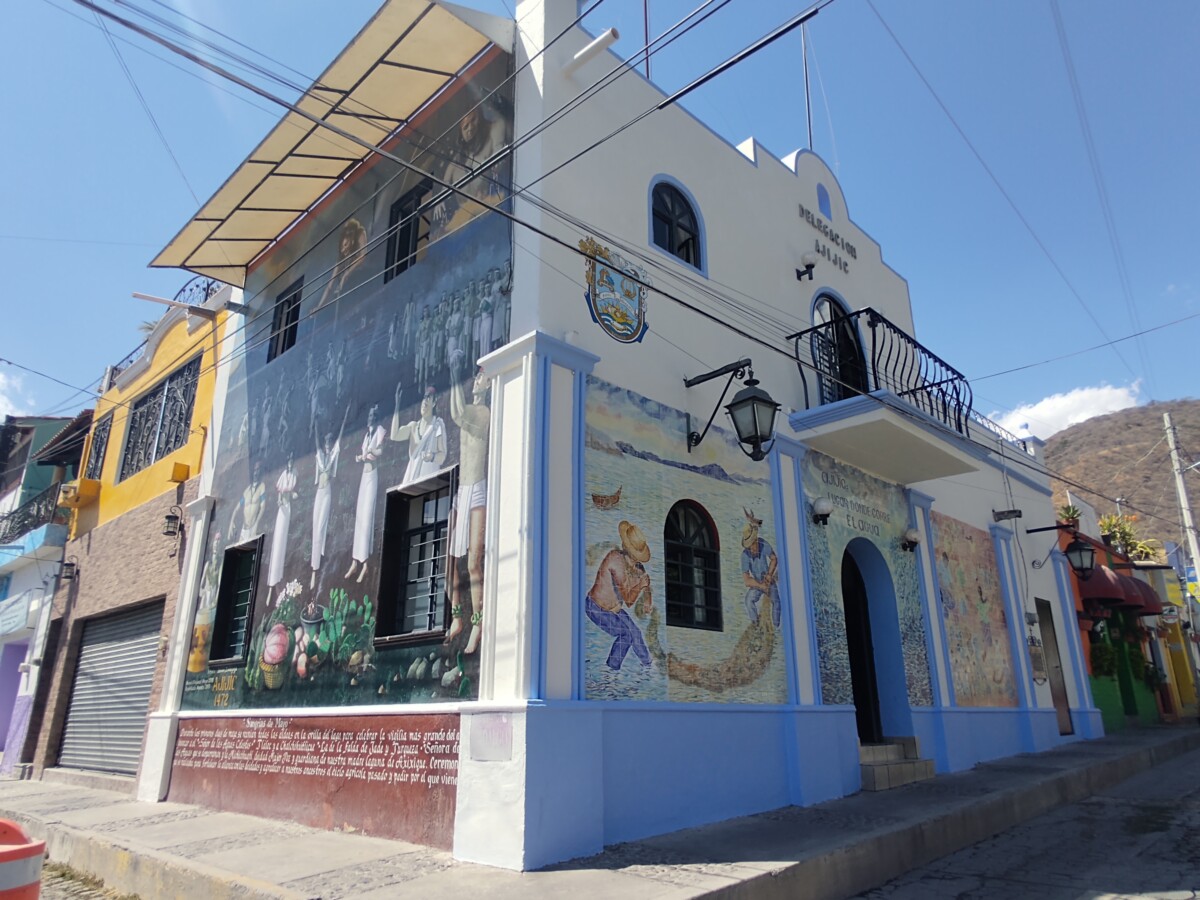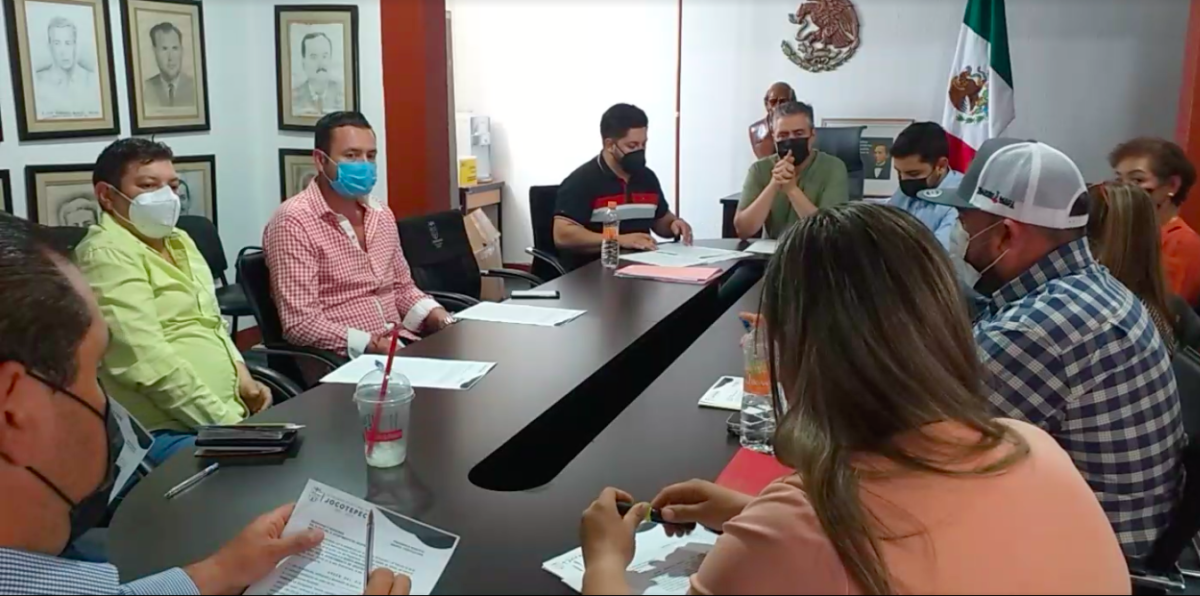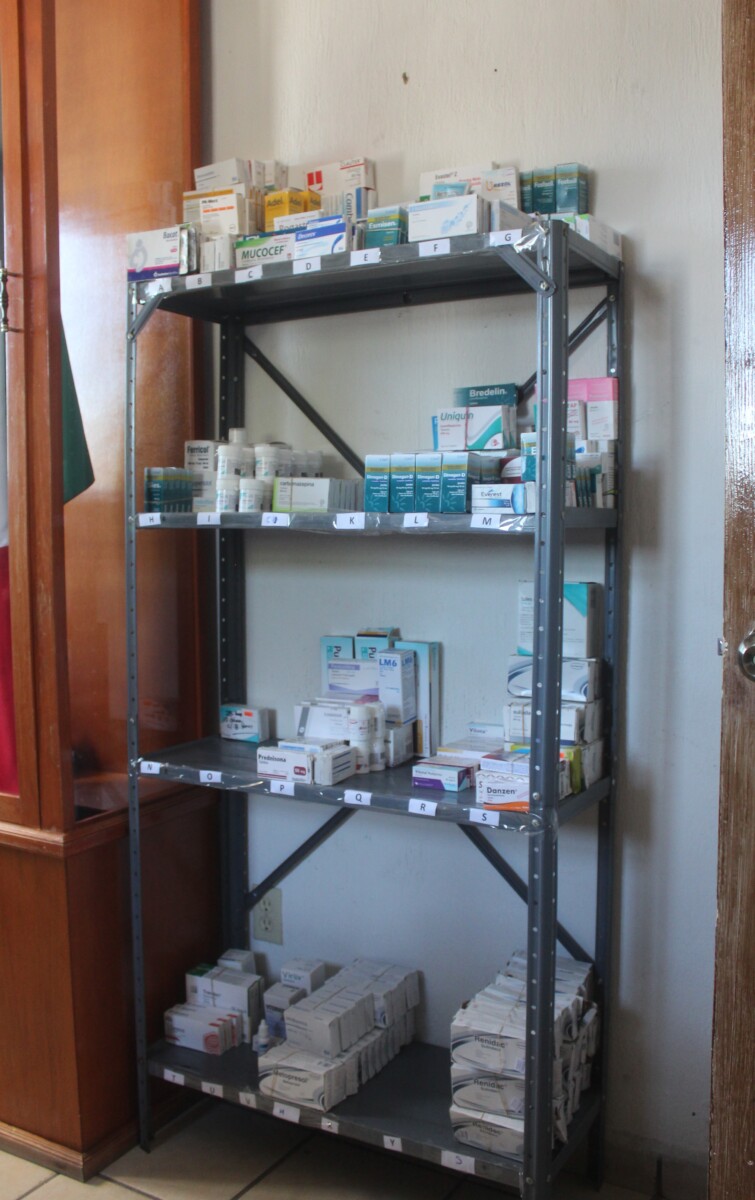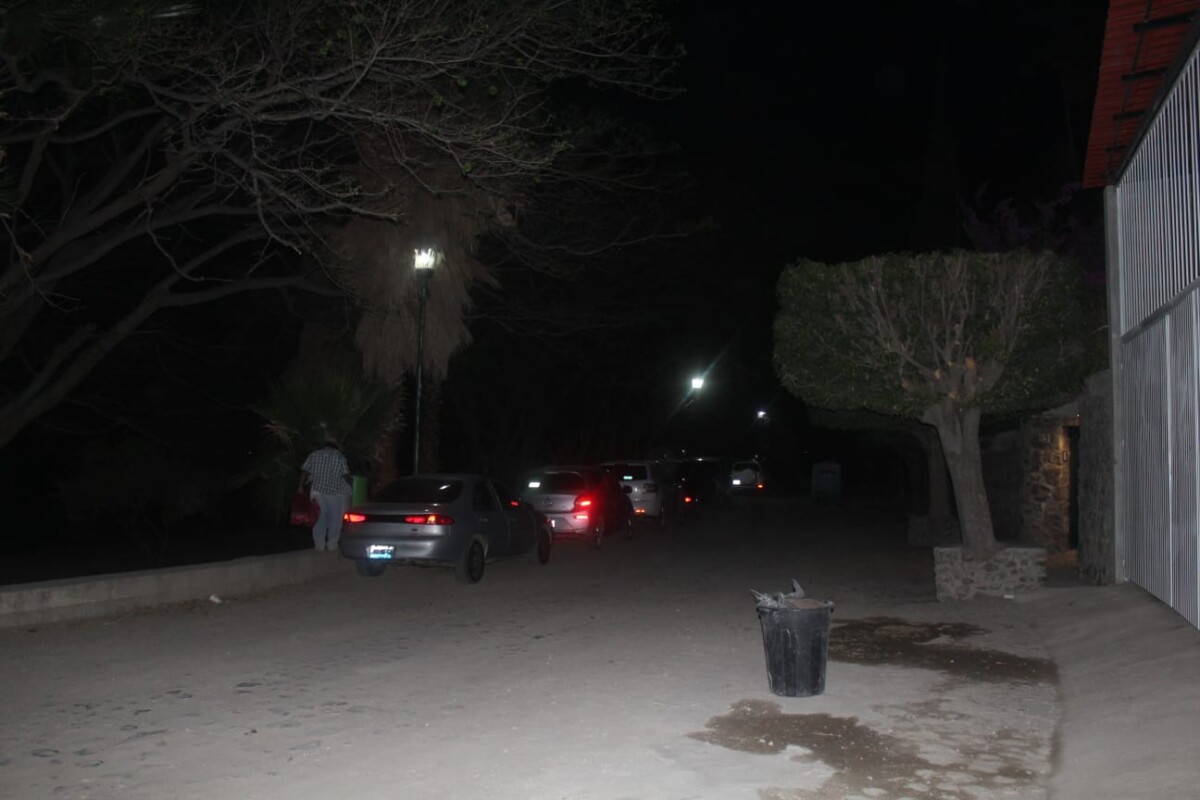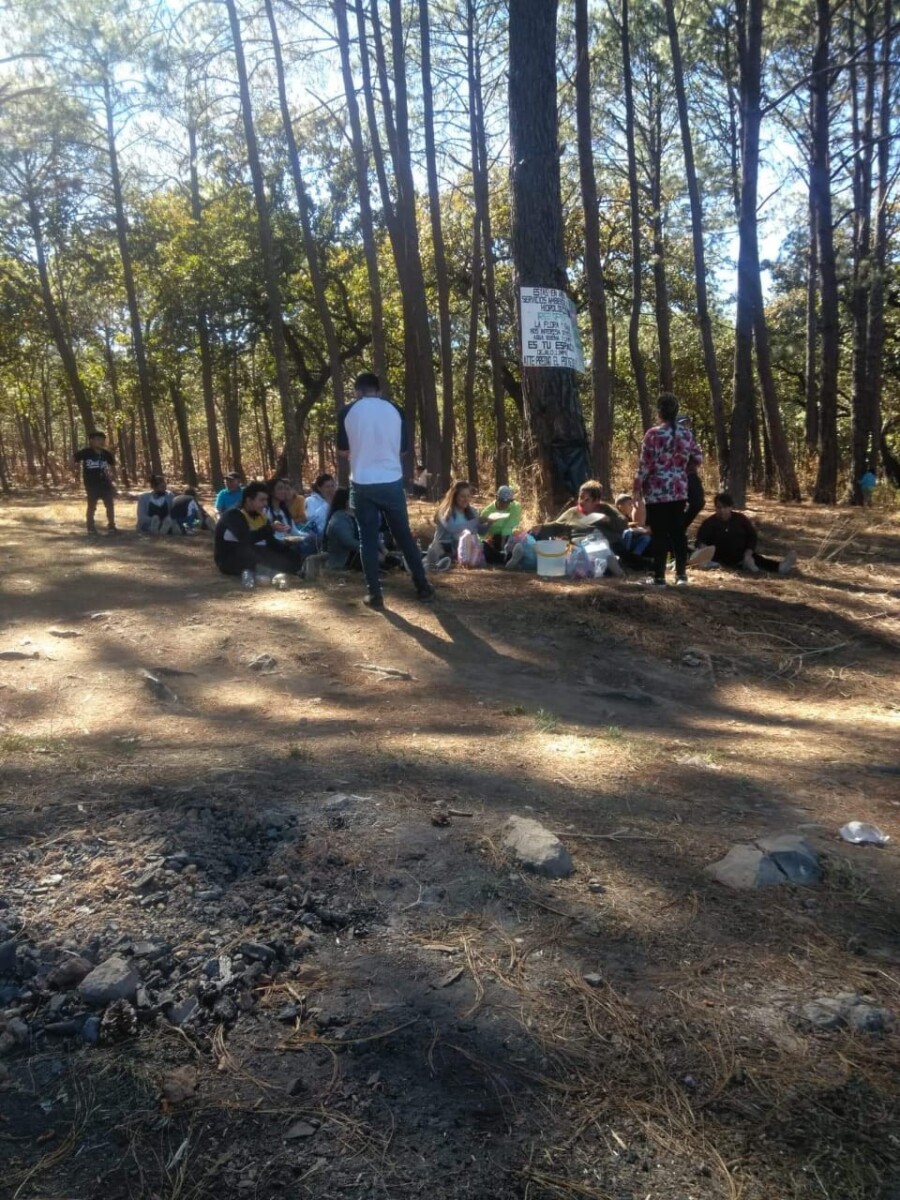Localidades
Lakeside Chronicles
Seño Cata doesn’t like pictures. ‘I am ugly,» she tells me. But her photograph contradicts her. Photo: María Reynozo.
María del Refugio Reynozo Medina
At 93 years old, Catalina Valencia Navarro walks around the house alone, leaning on a walker with an impeccable face. “I am very happy,» she says with a deep sigh.
She doesn’t need to say it, it is announced by her slow but sure steps, her beautiful luminous eyes and the gentle smile framed by her burnished hair. She wears black shoes that reveal her perfect toes, a long khaki A-line skirt and a soft almond-colored blouse.
Catalina Valencia retired at the age of 82 after 62 years as a teacher. “It’s a mistake to be in teaching if we don’t like it,» she said. In addition to being an elementary school teacher, she co-founded the Magdalena Cueva High School project in 1963 with the principal Antonia Palomares Peña. There she taught English and geography.
The first complete elementary school was started by Palomares because at that time in Jocotepec, elementary school was only up to fourth grade.
“The principal trusted me a lot, she was energetic and very prepared.”
“Cata» as her pupils called her, tells of her experiences with facts and names as if it were yesterday.
«The principal commissioned us to go all over town inviting the children house by house.” They also went to invite children in the towns of San Cristóbal, Zapotitán, Huejotitán and El Molino.
The first high school began in a borrowed building, the José Santana Elementary School. In the afternoon, after the elementary school children had finished their day, the older students attended school.
Mario González Barba taught biology and was the godfather of the first generation of students.
Priest Santiago Ramirez taught drawing and Engineer Jorge Ibarra Galvez taught chemistry.
It was a cooperative high school and the students paid 30 pesos a month. The teachers earned 15 pesos an hour if there was enough money to pay them. A board of trustees made up of people from the community managed the school and was transparent about the resources.
In 1970 the board of trustees managed to build a separate school with contributions from the efforts of the parents, the teachers, and the community, even the masons contributed their labor. The high school was a milestone in the history of Jocotepec. For many, there is a Jocotepec before the high school and Jocotepec after the high school.
In 1982, under the premise of the President of the Republic that there should be secondary schools all over the country, an authority came to Jocotepec to offer a secondary school. The municipal president at that time, responded that there was already a secondary school and allowed its appropriation for the creation of the official secondary school. That action stripped the school from the founding teachers. The teachers were fired. For Valencia Navarro and her colleagues, it was a repudiatory act. “I don’t even want to say the name of that authority because it still hurts me.»
As a high school teacher, something that always filled her with satisfaction was to see those children who, with so many difficulties, achieved their goal. Some students came from other communities, walking across the hill to get to school. The teachers adjusted the classes to the students’ schedules and even taught on Saturdays. Valencia Navarro recalls that a boy from Potrerillos would sleep in his friend’s garage so he could attend school.
«I loved the children from San Cristóbal very much because they were very noble, they left a beautiful mark on me.»
When Valencia Navarro retired, the high school had 300 students. She still remembers them.
“I don’t know if they loved me,» she says, «but many still visit me, and I love them.”
In 1987, «Seño Cata» (short for «Señorita» similar to «Ms.» or Missus) retired with 36 years of service in education. Her mission did not end there. A Zacatecan priest in San Juan Cosalá sought her out, Alberto Macías Llamas, who ran a boarding school. Valencia Navarro went for six months and stayed for 21 years serving the 200 children from rural communities.
Although Catalina was director, for her the most beautiful thing was not the important position, but the closeness with the children in the classroom as a teacher. «I always liked my students to be the first, never the last, and I would get the first places in the achievement contests.»
When I ask her to show me her awards, she agrees, but first says, “Wouldn’t it be a chocantería (impertinent)?”
We walk to the hallway where her degrees and awards hang. Those decorations and the recognition of her students are the most valuable things for her, although they are not proportional to the amount of the pension she receives.
«When I was a child, I saw my mother die. I stuttered and it wasn’t until I was nine years old that I overcame it and was accepted in elementary school.» The classroom was in what is now the Jocotepec municipal marketplace. «We were so poor in the town that we didn’t even have a school. One of the classrooms only had walls and no roof. Some teachers would take the children home and teach them there.» She remembers her teacher Felicitas Palomares with love; she was very important in her childhood. Perhaps that is why «seño Cata» is also a very dear teacher for her students.
If she were born again, she would be a teacher again.
Translated Nita Rudy
Residents criticize change of color in the Ajijic police station
The building of the Ajijic delegation was repainted blue. Photo: Sofía Medeles.
Sofía Medeles(Ajijic).- The new look of the Ajijic delegation building, which began to be painted last week, has generated controversy and diverse opinions among citizens, due to the color used: blue.
The acting delegate, Maximiliano Macias Arceo, said that he is aware of the opinions, both positive and negative, that this change has caused. He commented that the color was chosen from a range of colors suggested by the State Government for Pueblos Magicos venues, among which were dark greens, browns and cream colors, in addition to two shades of blue.
In social networks and in daily conversations of Ajijic residents, there have been diverse opinions about the new painting among those who support the remodeling and those who did not like the change.
«The government just changed political parties and now they change the color of everything to match. So far the malecon, the cemetery and now the police station. They say they are different tones, but the intention is clear. As a Magic Town, they should regulate this change of colors more. Besides, it would be better to invest in fixing streets, street lights, planters, etc., instead of spending liters and liters of blue paint,» commented Antonio.
In contrast, many other residents agree with the modification. «As long as they paint and show a neat image to tourists, it’s fine, that’s what many of us live on. It is something that has to be done and, in my opinion, this new color is in accordance with Ajijic, because it is a place where water abounds in the historical and cultural aspects», expressed Luis.
Finally, Macias Arceo commented that the moldings of the mural that is on the wall of Hidalgo Street, still need to be painted a color that harmonizes with it. Still missing in the main facade of the painting is the upper part, in addition to the shield of the delegation and the logo of Ajijic Magic Town.
Translated by Sydney Metrick
Families of the two murdered Jocotepec policemen will receive 100 percent of their pension
The city council approved to cover 100 percent of the pension of the policemen killed in the confrontation on March 10. Photo: Social Networks.
The Jocotepec City Council approved a proposal to grant 100 percent of the pension to the families of the two policemen killed in an armed attack on March 10.
During the fifth ordinary session of the council, held on Thursday, March 17, the council members observed a minute’s silence in honor of the security officers who died in the line of duty before discussing the pension to be granted to the bereaved.
Municipal trustee Carlos Alberto Zúñiga Chacón said that, according to the reports issued by the labor office based on the seniority of the officers, the corresponding pension would be 30 percent. Edgar Omar Leal Nava had been serving in the force for two years and three months, while Andrés Inclán Zamora had only 52 days.
However, due to the heroic performance of their work and the situation in which they died, municipal president José Miguel Gómez López proposed that it be increased to 100 percent.
«They were behaving like heroes, without weapons, without equipment. It’s the least we as public servants can do,» commented Gómez López.
The initiative was approved unanimously. A monthly amount of 10,500 pesos will be given to the families of those affected, which will be divided equally among the children of each police officer. The pension will be delivered until the last of their descendants reaches the age of majority.
Finally, the municipal president also assured that, after the unfortunate events, «It will be necessary to make a front to pressure the state and federal authorities,» to provide more economic support and to be able to adequately equip the public security officers.
The policemen were killed while responding to an accident near San Cristóbal Zapotitlán on the evening of Thursday, March 10. Two paramedics, a man and a woman attending the accident, were also injured in the aggression.
Translated by Sandy Britton
Drug arrest in Chapala
Braulio Esteban «N», was taken to the ministerial agency for alleged possession of narcotics. Photo: Prosecutor’s Office.
An 18-year-old man was arrested in Chapala by officers of the Jalisco State Security Secretariat (SSE), after agents found five packages of the drug known as «crystal.»
The officers were patrolling the Santa Maria neighborhood Puerta de Horno street at the intersection with Pescadores when they noticed a young man trying to hide. They followed the subject, who tried unsuccessfully to escape. The detainee was handed over to the authorities which will continue investigating.
Translated by Elisabeth Shields
Dispensary will support the people of Ajijic
The over-the-counter medicine dispensary is located in the Ajijic delegation. Photo: Sofía Medeles.
Sofía Medeles (Ajijic).- An over-the-counter medicine dispensary was opened in the office of the Ajijic delegation.
The person in charge of the office, Maximiliano Macias Arceo, stated that the medicines will be donated by residents and, in turn, will be provided free of charge to whoever requests them.
There are two requirements for donated medicines. They must be in good condition and not expired, and they must be over-the-counter types of medications, for example, anti-flu, anti-diarrheal, analgesic, anti-inflammatory.
To receive the medicine, a copy of a medical prescription must be shown. If the desired medicine is available in the dispensary, it will be provided free of charge.
The Ajijic delegation, located in front of the main square on Colón Street, will receive and deliver the medicines during office hours, from 9:00 a.m. to 3:00 p.m.
Translated by Sandy Britton
Disagreements over street lighting in La Crucita neighborhood of Ajijic
Del Paseo Street has several streetlights some say it’s insufficient. Photo: Sofía Medeles.
Sofía Medeles(Ajijic).- Residents disagree on street lighting in the La Crucita area, located two blocks from the Ajijic boardwalk. The area has several functioning street lights, but some concerned citizens say there still isn’t enough light on the street. However, one couple is annoyed by the strength of the existing lights.
Acting delegado Maximiliano Macias Arceo commented that a couple living at the intersection of Nicolas Bravo and Del Paseo, are disturbed by the lights. «There is a big problem with those people who are bothered by the light. They’ve bought a device to turn off the lights at a certain time, though I believe it has not been used. They were told that they cannot do that, since it is a public road. Other neighbors requested the lights to prevent people from staying there drinking alcoholic beverages until late hours or throwing garbage.»
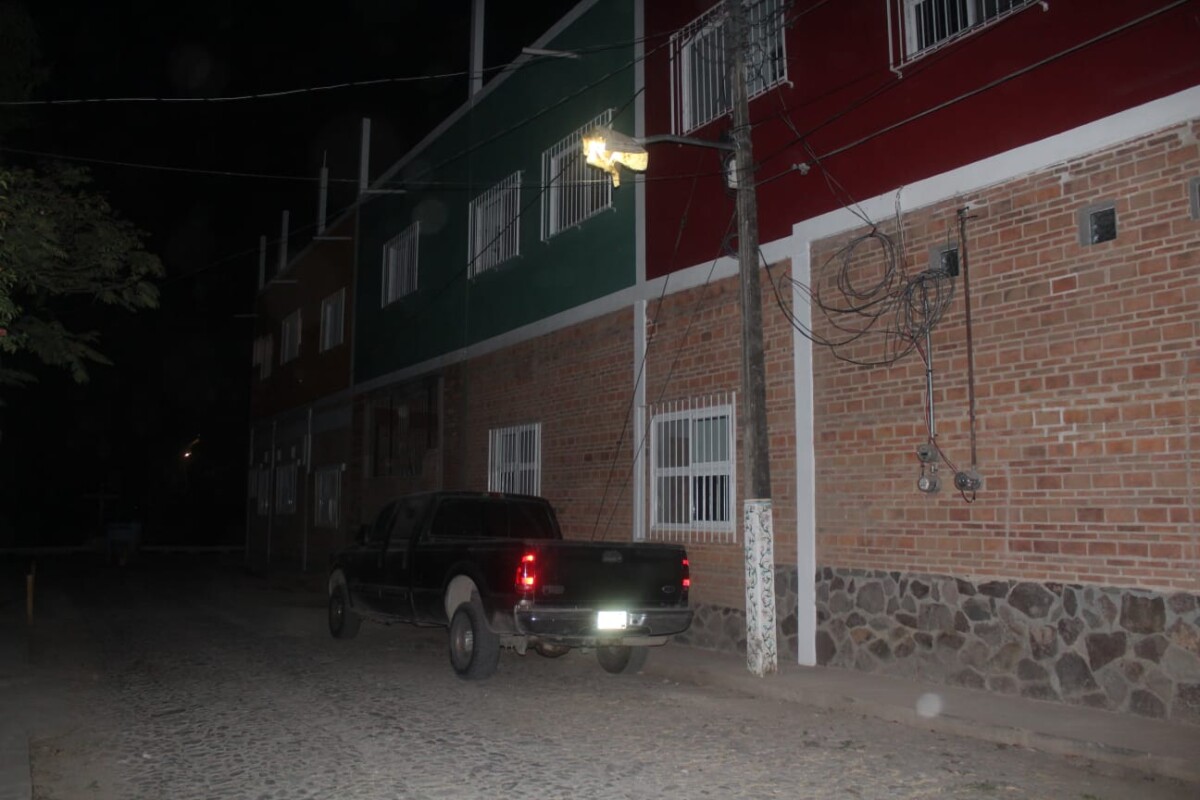
Neighbors covered a streetlight on Nicolás Bravo Street. Photo: Sofía Medeles.
People passing through the area also complain about the lack of lighting. The last administration gave permission to cover a streetlight on Nicolás Bravo Street, a few meters from the area of La Crucita, because it bothered the couple in question. It now offers very little light.
In a tour by Semanario Laguna, there were at least four lamps on Del Paseo street and two in the beach area. Despite this, the area is still very dark. Four passersby were asked what they thought of the lighting, and they agreed that it is insufficient.
For his part, Macías Arceo stated that his intention is to put more lamps in the area, since there is a lot of traffic both on the beach and in the street. After a recent cleanup, more people make use of the space. He also stated that anyone installing a timer would be subject to a sanction.
Translated by Elisabeth Shields
Dawn on González Gallo Avenue in Chapala marred with garbage
At the end of the party, empty bottles, cigarette packs and snack packages are left along González Gallo Avenue.
Jazmín Stengel(Chapala).- González Gallo Avenue in Chapala is one of the most popular spots where people go to drink and socialize on weekends, which causes a large accumulation of garbage.
According to shopkeepers in the area, the majority of the people who come to party at night are locals. However, few of them seem to pick up their garbage when they leave, leaving empty liquor and soft drink bottles, cigarette packs and an endless number of snack packages scattered all over the avenue.
Witnesses also said they were aware that the garbage truck passes by at night and very early in the morning. Many of the neighbors are in the habit of taking out the garbage after the garbage collectors have left, which also causes piles of garbage that are left overnight.
There are two main alcohol stores on the avenue, both of which said they help pick up their customers’ garbage before closing after midnight, but they do not always notice the garbage that people leave behind in the early morning.
One of the owners has observed on his security cameras, dogs tearing up the bags on the ground and citizens opening the bags to look for empty aluminum cans and leaving the rest of the garbage scattered on the ground.
The staff of Chapala Park and Gardens Department, together with the Public Waste Department, which has the obligation to keep the area clean start sweeping at 5:00 a.m. but this routine is not always regular, according to the shopkeepers who observe the street through their cameras.
Monday is the most critical day, due to the fact that there are more people partying on González Gallo Avenue the night before, so the garbage increases and the truck tends to pass later in the day. The merchants interviewed assume that this is due to the accumulation of garbage on the malecón, as they have observed the personnel in charge passing by on more than one occasion.
Translated by Christalle Dalsted
San Juan Cosala residents on pilgrimage to visit the Virgin of Talpa
People of all ages made the journey walking from Ameca to Talpa with the mission of visiting Our Lady of the Rosary. Photo: Courtesy of Alma Serrano.
Alma Serrano (San Juan Cosala).- A group of 40 people from San Juan Cosalá, made the traditional walk to Talpa de Allende to visit Our Lady of the Rosary. The faithful left on March 7 from San Juan Cosala to the municipality of Ameca, where they began their pilgrimage that lasted five days.
«We walk at night and rest while the sun is shining, since it feels very hot. It is essential to wear good tennis shoes, a good hat, a good lamp, they are needed all the way,» explained Chela Verar, who has been doing the walk year after year for 27 years.
People of all ages and genders, from infants to seniors, made the journey as an act of faith towards Our Lady of the Rosary of Talpa de Allende; the group of pilgrims arrived at the basilica on the afternoon of March 11.
Chela Verar shared that this custom is very present in her family that, despite its difficulty due to the long days of walking, it is worth it. «It is difficult, but it is a beautiful experience,» she concluded.
Every year hundreds of Cosalenses undertake this journey, either on foot, by bicycle or by bus, as a pilgramag to the Virgin of Talpa for the favors granted.
Translated by Patrick O’Heffernan
Security reinforced in Jocotepec and the region after violent events
On March 13, reinforcements arrived in Jalisco, 500 military personnel from the Secretariat of National Defense. Photo: courtesy.
After an armed attack left two policemen dead and two paramedics wounded in Jocotepec, as well as trucks set on fire in Tamazula de Gordiano, last Thursday, March 10, state authorities announced the reinforcement of security forces in the region.
After holding a meeting with the State Security Council, the Governor of the State, Enrique Alfaro Ramírez, stated that surveillance would be reinforced in the municipalities where violent events took place, as well as in the areas bordering Michoacán.
«These facts cannot make us fall into fear and anxiety,» commented the state governor in a message issued through his social networks.
Despite the series of violent events that took place on the night of March 10, Alfaro Ramírez considered that Jalisco is calm and that the security problems are similar to the neighboring states of Colima, Michoacán and Zacatecas.
In addition, on March 13, the Secretary of National Defense (Sedena) in Jalisco announced the arrival of another 500 military personnel to reinforce security in support of state and municipal authorities.
Under the «Joint Task Force Mexico» strategy, the corporation will carry out various operations to support local authorities.
«The ‘Joint Task Force Mexico’, has the characteristics of great mobility and power, but above all the ability to be deployed quickly to one or several parts of the national territory by land or air,» explained the Sedena.
Translated by Patrick O’Heffernan
The lights on the Ajijic bike path are turned on
The bicycle path after lights were turned on Thursday, March 17. Photo: Sofía Medeles.
Sofía Medeles(Ajijic).- A week after the announcement made by the Chapala City Hall on March 17, another stretch of lights was installed along the Ajijic bike path.
Two weeks ago, the social communication department stated that the lights would be turned on from Tempisque Street to Villa Nova, however, lights are now on to the limits of the delegation, in the area known as La Cristina.
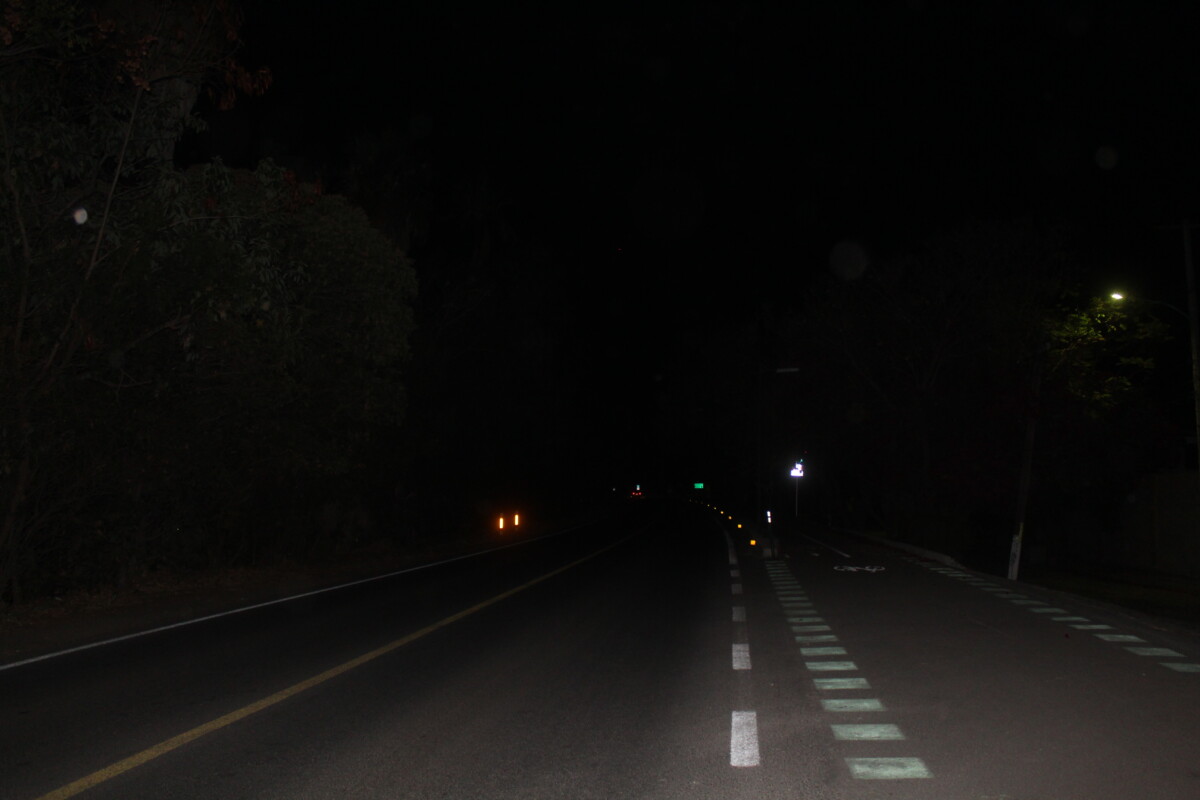
The bicycle path before the illumination. Photo: Sofía Medeles.
Acting delegate Maximiliano Macias Arceo said that although most of the bicycle path in Ajijic is already illuminated, some lamps need maintenance because the photocell does not work, among other minor problems.
He added that continuous maintenance will be given to both the lamps and the trees. He thanked the municipal president, Alejandro Aguirre Curiel, the director of public lighting Gil Parra, and the director of municipal services José Antonio Urzúa Gracián.
Translated by Nita Rudy
© 2016. Todos los derechos reservados. Semanario de la Ribera de Chapala

